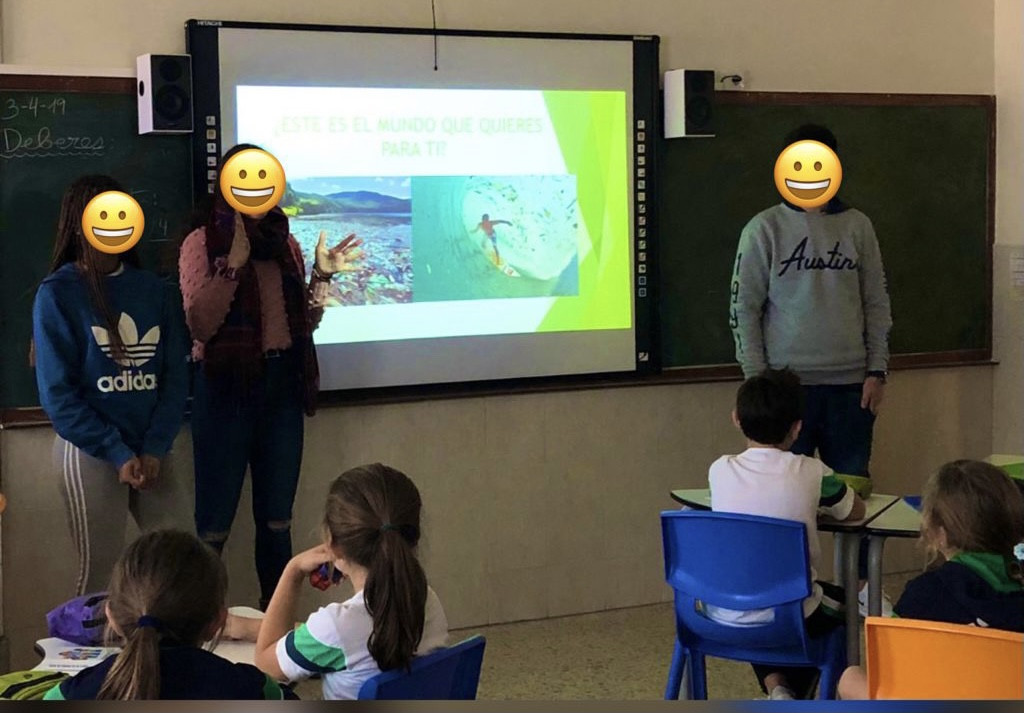Practice Description

Take Care the planet that gives us the life
by Colegio Santa Teresa de Jesús (Fundación Escuela Teresiana) added on 07 Mar 2021
|
Brief description:
|
Following the Design for Change methodology, 3rd-year ESO students of the school observed reality with different eyes and were very concerned about the effect of plastic pollution in our world. From there they decided to carry out a project related to this topic. Their actions have been aimed at seeking measures to reduce and recycle plastic both in their immediate surroundings (the school), as well as in the city (Las Palmas), and on the island (Gran Canaria) itself. |
|---|---|
|
Photos:
|
|
|
Countries:
(where the practice takes place)
|
Spain |
|
Cities:
(where the practice takes place)
|
Las Palmas de Gran Canaria |
|
Organization name:
(running the practice)
|
Colegio Santa Teresa de Jesús (Fundación Escuela Teresiana) |
|
Organization type:
|
Other: Educational |
|
Contact person:
|
Esther Fabelo |
|
Contact email:
(for further information and inquiries)
|
esther.fabelo@laspalmas.escuelateresiana.com |
|
Social media:
|
Twitter: @FETlaspalmas
Instagram: FETLASPALMAS
Facebook: Colegio Santa Teresa de Jesús - Las Palmas
|
|
Related resources:
(e.g., web site, publications,media)
|
|
|
Participants’ age groups:
|
14 - 15 |
|
Indicative number of participants:
|
25 - 75 |
|
Oriented to a specific gender?
|
No |
|
Frequency:
(for the same group of participants)
|
Once a week |
|
Total duration:
(for the same group of participants)
|
Half day |
|
Location:
(where the practice takes place)
|
|
|
What are the role(s) of the adult(s) running the practice?
|
|
|
During the practice, participants…
|
|
|
Participants work…
|
|
|
What type of materials do participants use?
|
|
|
Pedagogical approach:
|
|
|
Social justice/equity approaches:
|
|
|
Does the practice have (explicit or implicit) learning objectives?
|
Explicit: Recognize and disseminate actions that favor the conservation of the environment. Facing different projects, challenges and problems of personal or collective interest, recognizing personal characteristics, assuming commitments and responsibilities, cooperating, making judicious decisions and anticipating consequences. Interact with other people involved in their environment, respecting differences and establishing constructive relationships. |
|
Is the practice (explicitly or implicitly) connected to school curricula?
|
Yes, explicitly |
|
If connected in any way to school curricula, which subjects are covered?
|
|
|
Does the practice aim to have an impact on the engagement / interest of participants with a particular scientific topic, concept, phenomena, theory or career?
|
Yes: Students become aware of the current situation on the planet and what they can do to improve our reality. They are also responsible for communicating it to others. |
|
Does the practice aim to have an impact on the attitude of participants with a particular scientific topic, concept, phenomena, theory, or career?
|
Yes: It causes a change in the attitude of adolescents. They are more sensitive to the effects of climate change, caring for the planet ... They take personal actions in their day-to-day to take care of the planet. |
|
Does the practice aim to have an impact on the behavior of participants related to a particular scientific topic, concept, phenomena, theory, or career?
|
|
|
Does the practice aim to have an impact on the development / reinforcement / practice of skills of participants?
|
|
|
Additional notes:
|
Students follow the Design for change methodology: Feel, imagine, do and share. You can see the project in the following video from DFC Spain: https://www.youtube.com/watch?v=cjwe2W4vIVw |